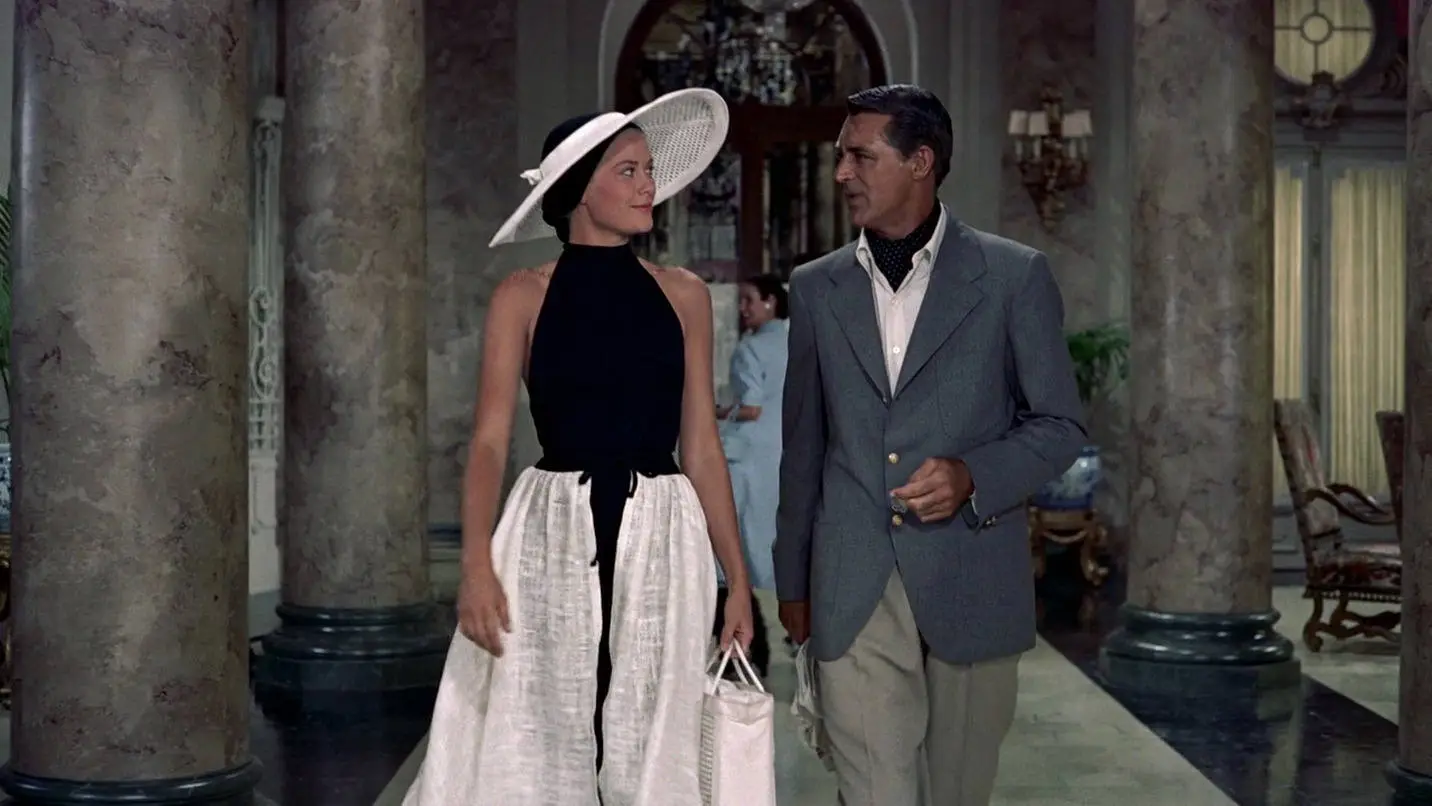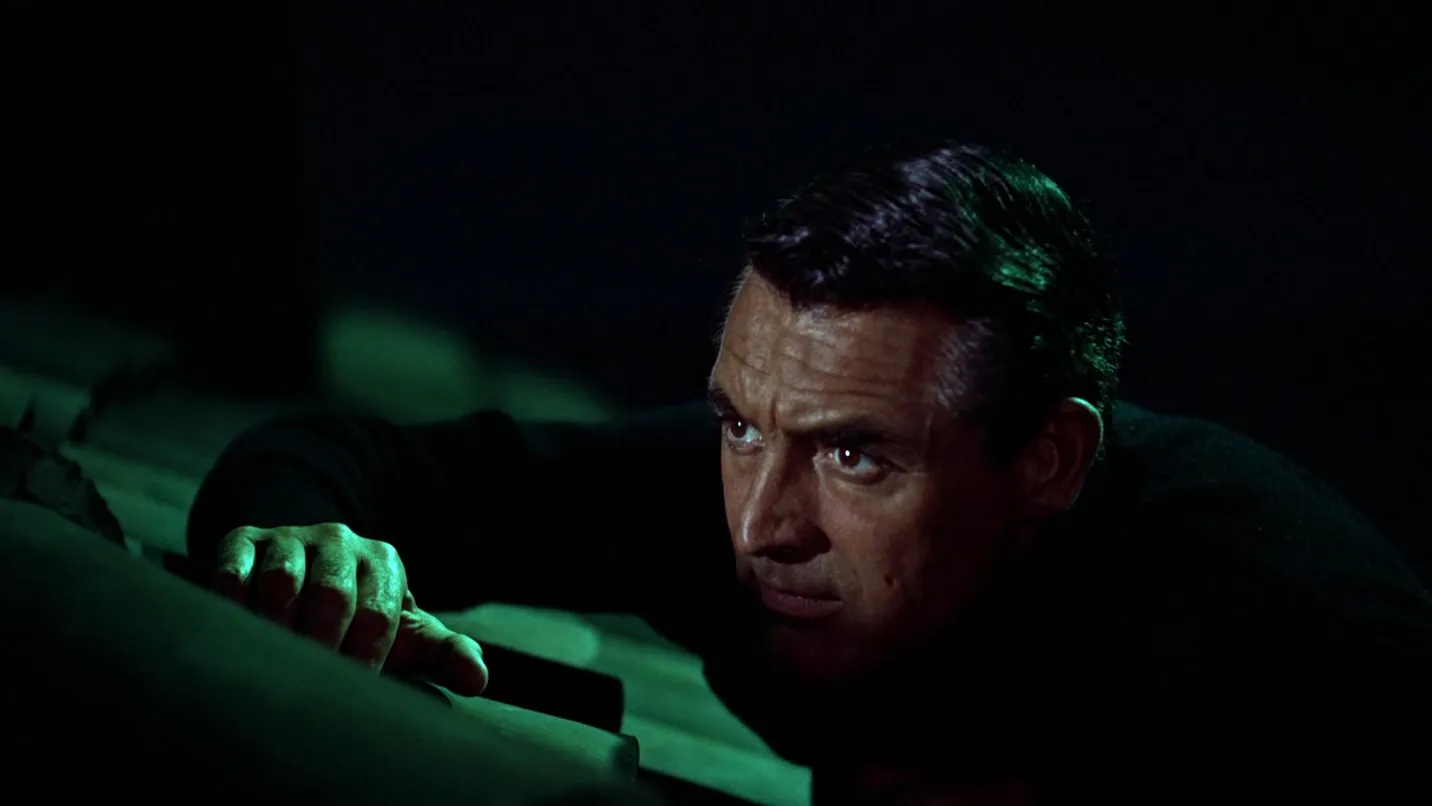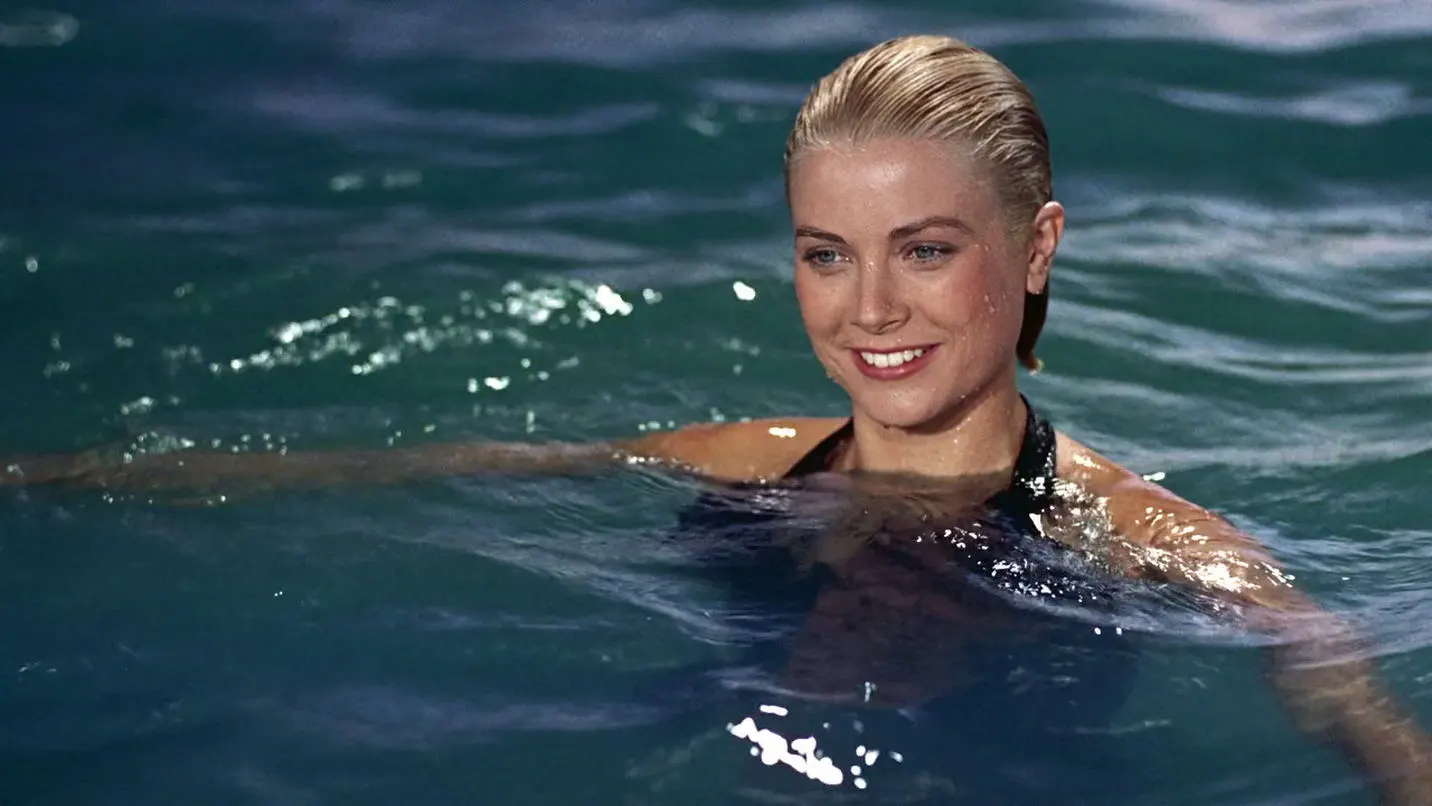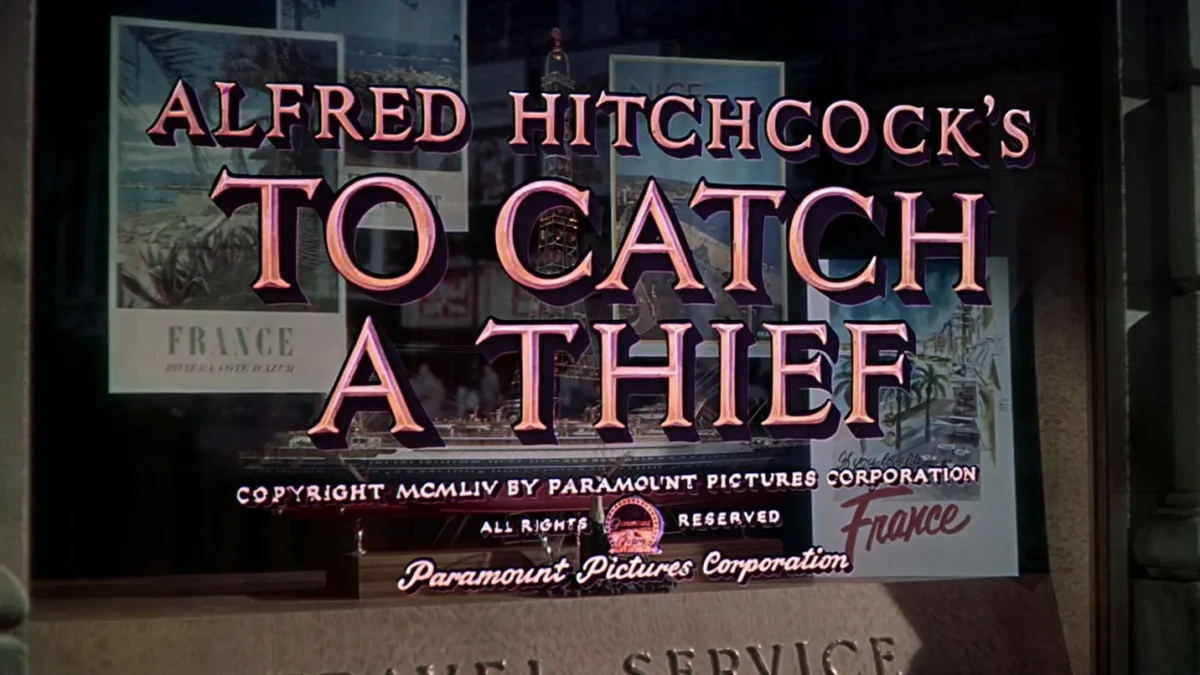Riviera of dreams
Hitchcock has three filmmaking gears: coasting, locked-in, and getting weird. To Catch a Thief is the textbook for the first of these: sleek, charming, a little hollow. I don’t mean that as a slam so much as setting a ceiling on the film. This is a sparkling vacation cocktail by the master pop-thriller mixologist, and the garnish is Cary Grant and Grace Kelly, who might be the single most photogenic pairing the movies ever managed. (If you told me you viewed this film strictly as a thirst-watch for Kelly and/or Grant, I would completely understand.)
The hook is a solid one: John Robie (Cary Grant) is a retired American jewel thief known as “The Cat,” once the best in the swiping business but who eventually got off scot-free. He is being framed by a new burglar copycatting his style. To clear his name, he teams up with an insurance man, H.H. Hughson (John Williams; no, not that one). During his reconnaissance, he crosses paths with American heiress Frances Stevens (Grace Kelly) and her aggressively friendly mother, Jessie Stevens (Jessie Royce Landis). Robie tries to find harbor with his old comrades of the French Resistance, but they resent his cushy life and the bad attention Robie brings to the group. What follows is a Riviera chain of cat-and-mouse operations between the cops, Robie, the mysterious new thief, and the wealthy victims — the latter including Frances and Mrs. Stevens.

Hitchcock seems to forget every now and again that he’s ostensibly filming a caper rather than travelogue. He soaks in beautiful French landscapes and architecture in his first VistaVision film. The languid pace adds to the feeling of a deflated narrative momentum rather than a propulsive one; the sense of constriction and escalation that Hitchcock usually applies with precision is minimal. The film is visibly hobbled by the Hays Code, which put harsh limits on showing crime as rewarding and remunerative. This puts the Code at odds with the premise: it’s hard to focus on the life of a retired thief getting back in action and still getting away with it while holding to those strictures. (The other bit of Code restraint results in one of the film’s best scenes, though: a seduction in a hotel room where fireworks out the window tell the story of what’s happening just offscreen.)
It really is odd how flimsy the story is with such a good setup; even other films squarely in Hitchcock’s “coasting” mode have a bit more narrative sensibility than this. The second half loosens as Hitchcock follows Grant and Kelly dining and driving and bantering with innuendo rather than chasing down the thief. The thread of Robie’s Resistance backstory, in particular, feels malnourished: it’s almost completely ignored in the film’s middle act, yet plays a major role in the film’s conclusion. Robie’s agreement with the insurance salesman Hughson is undercooked, too.
But good grief is this thing gorgeous. I haven’t seen every Hitchcock film, but this is the most strictly beautiful Technicolor work I’ve seen him do. Robert Burks shot the film, like many of Hitchcock’s ‘50s and ‘60s films. A few bits of the film use the color for storytelling, but most of it is just lovely Technicolor photography for the sake of it, which is fine by me. The costumes, particularly at the climactic masquerade, are really outstanding throughout, too. Edith Head, Hitchcock’s longtime costume designer, does not miss, and this film is one of her masterstrokes in both elegance and baroque extravagance. Every location in the luxurious French Riviera is intoxicating.

Lest I get too carried away in downplaying To Catch a Thief’s suspense elements, I must emphasize that it’s still an Alfred Hitchcock film. Every twenty minutes or so, the film locks into place as a suspense film, though many of the best parts are essentially warm-ups for what he’d do in North by Northwest a few years later. An early segment where Robie evades the police and a car chase towards the middle of the film both evoke Hitchcock’s coming master-class in espionage action-comedy. But my favorite Hitchcockian segments are any action set on rooftop. Somehow, set pieces filmed on a tilted plane are more geometrically tense and pleasing. The very best rooftop chase comes in the masquerade-ball climax, a perfect demo of Hitchcock’s spatial command, the patterned and night-tinted roof offering an almost surreal texture. Some insidious but seductive green seen in the climax foreshadows the great use of the color in Vertigo.
As for the players, Grant is the illustration you see in the dictionary when you look up the word “debonair” in the dictionary, strutting with confidence. Kelly matches him in charisma. In his famous interview with Francois Truffaut, Hitchcock cited Kelly in this film as his preferred version of female sexuality: proper and deferential in public, but fierce and decisive in private. The supporting cast is good, too: Brigitte Auber offers a counterpoint to Kelly as the third prong of a half-baked love triangle. Though the character doesn’t have strong definition, Auber suggests a midpoint between girl next door and femme fatale. I enjoy Williams, too, as a fusty upper-class Englishman.

To Catch a Thief is indeed a lightweight film. It never quite articulates its ideas about class and legacy and privilege that are vaguely swirling about its premise. But as far as trifles go, it’s an excellent one, a digestif following Hitchcock’s introspective and haunted Rear Window from a year earlier. To Catch a Thief is gorgeous, and it occasionally comes alive with little bursts of craft. When it’s cooking — the rooftop chases, the fireworks, that picnic kiss — it’s almost effortlessly excellent. And when it’s not cooking, hey, you still get to watch Grace Kelly and Cary Grant seduce each other in Edith Head’s costume-work, so life is still good. Let’s settle on “Good” as an aggregate of those, though I’m sympathetic to bumping this up a rating if the mood calls me.
Is It Good?
Good (5/8)
Dan is the founder and head critic of The Goods. Follow Dan on Letterboxd. Join the Discord for updates and discussion.


One reply on “To Catch a Thief (1955)”
This is pretty much how I remember To Catch a Thief: messy and disappointing but with some A+ parts.